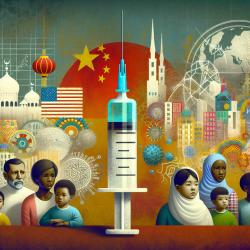Understanding the Importance of Non-NIP Vaccines
Vaccines have been a cornerstone of public health, drastically reducing the prevalence of many infectious diseases. In China, while the National Immunization Program (NIP) vaccines are widely administered, non-NIP vaccines are still lagging behind in terms of coverage. These vaccines, which include the Haemophilus influenzae type b (Hib), human papillomavirus (HPV), pneumococcal conjugate (PCV), and rotavirus vaccines, are crucial in preventing serious diseases but are not covered by the national program, requiring out-of-pocket payments.
Key Findings from Recent Research
A recent scoping review published in the Infectious Diseases of Poverty journal highlights the current state of non-NIP vaccine coverage in China and identifies significant barriers to their uptake. The study reveals that the coverage for these vaccines is significantly lower than that of NIP vaccines, with Hib having the highest coverage at around 55%, while others like HPV and PCV are below 30%.
Moreover, the study highlights regional disparities, with lower coverage in underdeveloped areas. For instance, the three-dose Hib vaccination rate in eastern provinces was 38.1%, compared to 26.2% in western provinces. This disparity indicates a need for targeted strategies to improve vaccine access in these regions.
Barriers to Increasing Vaccine Uptake
The study categorizes the barriers to vaccine uptake using the 5A framework: Access, Affordability, Acceptance, Awareness, and Activation. Among these, acceptance, awareness, and affordability are the most significant hurdles.
- Access: Limited availability of vaccines in certain regions and insufficient healthcare provider capacity hinder access.
- Affordability: High vaccine costs deter many families, especially in low-income regions, from vaccinating their children.
- Acceptance: Concerns about vaccine safety and efficacy, coupled with insufficient knowledge, contribute to vaccine hesitancy.
- Awareness: Lack of awareness about the benefits of these vaccines is prevalent, particularly in rural areas.
- Activation: There is a lack of effective interventions to encourage vaccination uptake.
Strategies for Improvement
Addressing these barriers requires a multi-faceted approach. Here are some recommendations based on the study:
- Gradually incorporate non-NIP vaccines into the NIP to reduce financial barriers.
- Enhance public awareness campaigns to educate families about the importance and safety of vaccines.
- Improve healthcare infrastructure in underdeveloped regions to ensure better access to vaccines.
- Implement government subsidies or financial assistance programs to make vaccines more affordable.
For practitioners, understanding these barriers and actively working to address them can significantly improve vaccine uptake. By advocating for policy changes and engaging in community education, healthcare providers can play a pivotal role in enhancing vaccine coverage.
To read the original research paper, please follow this link: The coverage and challenges of increasing uptake of non-National Immunization Program vaccines in China: a scoping review.










